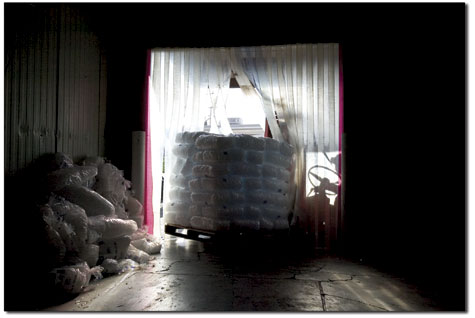|
photos by Jared Boyd
OK, basicaly it goes like this: At the highest point in the
ice-making assembly line, there is a giant reservoir filled with
water. Below the reservoir are large cooling vats, called
evaporators. As water is released into the evaporators, it
circulates around a cylinder containing a coolant (freon), which
makes ice form on the inner and outer walls of the evaporators.
Once enough ice has formed, hot gas is used to up the cylinder,
forcing the ice to fall inlarge chunks into an ice cutter below.
From here, the ice is cut into blocks or cubes and dumped into a
bin which, by the way, can contain several hundred cubic feet. From
the bin, the ice passes through a sorting machine, and with the
push of a button, is released into a bag . The bags are then passed
through a sealer and loaded onto pallets. At Durangos Southwest
Ice, Thomas Vanderleest and his crew of five churn out about 3,500
bags of ice every day, seven days a week. And given all the
equipment that is used, something is always breaking down.
Nevertheless, the ice making must go on.
|





